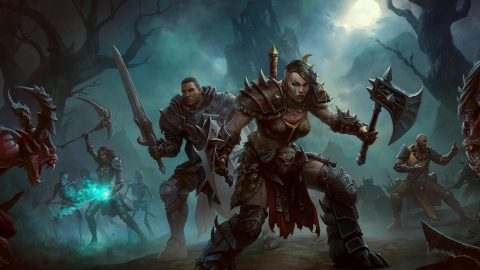
For an icon of Godzilla’s size – literally and figuratively – it’s remarkable how few genuinely great appearances the King Of The Monsters has made on-screen. For all of Godzilla’s vast history, even the biggest fan of the franchise will admit that there are really no more than two great movies that bear the creature’s name. Maybe, just maybe, Netflix’s Godzilla Singular Point can be its first truly great animated adaptation.
The Godzilla of Singular Point arrives 73 years after the creature’s debut. Directed by Atsushi Takahashi (assistant director of 2001 Studio Ghibli masterpiece, Spirited Away), this is a Godzilla production unlike any other. Of course, the creature has been animated many times before: 2017’s Godzilla: Planet Of The Monsters is a bleak-as-winter anime movie trilogy in which Godzilla drives humanity from the earth and into space; 1996’s really quite batshit Godzillaland was a kawaii educational series aimed at helping Japanese children learn to count; 1969’s Bambi Meets Godzilla needs to be seen to be believed. But you might argue that Singular Point is a 13-episode-long anime with one clear aim: to reclaim Godzilla’s soul.
It’s inconceivable to imagine that Godzilla Singular Point would exist if Shin Godzilla hadn’t set its co-ordinates
This is perhaps an unenviable task. As the years have turned, time hasn’t always been kind to Japan’s greatest pop culture icon (shut up Mario, sit down Pikachu). First seen in 1954’s Ishirō Honda-directed Gojira, the creature was originally conceived as an avatar for the then US-occupied Japan to process the trauma of the hydrogen bombs dropped on the country less than 10 years prior. Godzilla’s unusual scales were designed to resemble the keloid scars etched into the skin of survivors’ bodies. The creature’s atomic breath is a feature much less subtle.
Honda’s stark, black and white anti-war film makes for powerful viewing, even now. And yet Godzilla quickly lost much of its allegory; by the following decade the character was mired in endless cheeseball kaiju showdowns, played out amidst polystyrene boulders and cardboard skyscrapers, on the character’s home soil. Godzilla had been exported to America just two years after his Japanese debut, the film cut so it could be palatable to American audiences. Who wants to ponder the horrors of war when they’re queuing for popcorn?
The whitewashing of Godzilla continued. Hanna-Barbera’s 1978 cartoon The Godzilla Power Hour took his atomic breath away. This being the studio of Scooby (and Scrappy) Doo fame, they even gave him a nephew, Godzooky. By the following decade he was advertising Dr. Pepper. A decade on he existed to provide a subplot for Matthew Broderick and Maria Pitillo’s onscreen, Roland Emmerich-directed romance in Godzilla. Recent years have seen Legendary Pictures produce a trilogy of blockbusters that range from fine (Godzilla, 2014) to tepid (Godzilla: King Of The Monsters, 2019) to OK (this year’s Godzilla Vs. Kong).
But back in Japan, there’s been a concerted effort to make Godzilla matter again. No outing articulates this better than 2016’s brilliant Shin Godzilla. Where the creature first provided an avatar for nuclear war, here Godzilla symbolises the Fukushima Daiichi nuclear disaster and the 2011 Tōhoku earthquake and tsunami. Godzilla is once again a threat. The vessel he lives within is once again trying to say something. It’s inconceivable to imagine that Singular Point would exist if Shin Godzilla hadn’t set its co-ordinates.
‘Singular Point’ does a lot of things brilliantly – and differently, too. The opening theme – a thrilling tech-metal number entitled ‘In Case’, by idol band BiSH – declares as much from the off. As does the series’ superb creature design, with new (smaller, palaeontological) takes on classic kaiju (Rodan, Anguirus, Manda) conceived by the legendary Eiji Yamamori, a key animator on every Hayao Miyazaki film from 1997’s Princess Mononoke onwards. To great effect, the animation fuses traditional 2D processes with 3D depictions of the monsters – and the colours! Oh, the colours! Unquestionably, Singular Point is modern anime at its most visually delicious.
Compelling human character development keeps Godzilla Singular Point from slipping into technobabble hell
The story takes us to somewhere we’ve rarely been to before, too: hard science fiction, with the emphasis on the science. This comes as no surprise; series writer Toh EnJoe was, until leaving research in 2007 to pursue fiction writing, an actual physicist. Phrases like ‘transtemporal dimensions’ and ‘orthogonal diagonalizers’ abound, and yet compelling human character development (not a phase you often hear in reference to Godzilla media, but one deserved here) keeps the whole thing from slipping into technobabble hell.
The creative depictions of franchise stalwarts Jet Jaguar/Goro will intrigue longtime fans of the franchise – and there’s a robot dog. The problem is that Godzilla doesn’t appear until episode 10. When it does, the main attraction is on screen for the approximate duration of a healthy bladder’s toilet break.
The Godzilla character has come a long way from its politically inspired origins so many decades ago, but also barely any distance at all. After all these years, we’ve arrived at a moment in the monster’s history where the stories concerning the creature are once more as cerebral as they are chaotic. Godzilla once again means something much more than a reason to break the hearts of set designers. And yet, as entertained as you will be, chances are you will come away from Singular Point feeling cheated.
Godzilla’s soul may no longer be corrupted, but here it is, quite literally, absent.
Godzilla Singular Point is now streaming on Netflix
The post ‘Godzilla Singular Point’ tries to reclaim the monster’s corrupted soul appeared first on NME.







